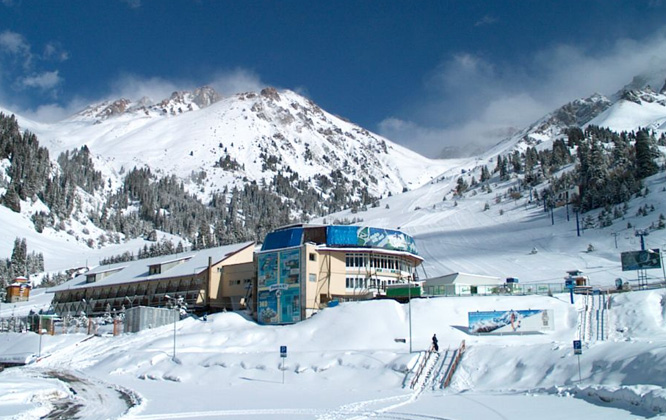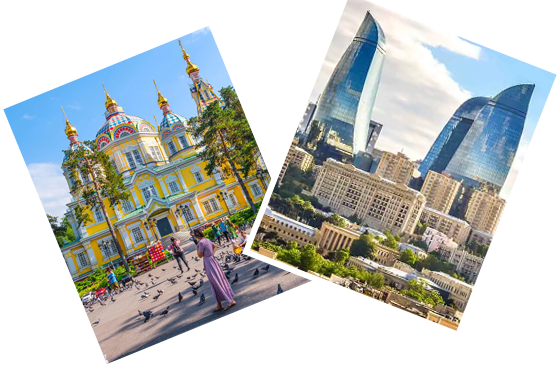
Choose your perfect travel experience
Browse our curated collection of travel destinations worldwide


Discover extraordinary travel experiences and activities

Plan your trip with our customized Silk Route tour packages
No packages available in this region.
![]() Hassle-free booking and best price guaranteed
Hassle-free booking and best price guaranteed
![]() 24/7 support available
24/7 support available
![]() Hand-picked tours & activities
Hand-picked tours & activities
![]() Free travel insurance
Free travel insurance
Seek new roads in Silk Route with Dook

Silk Route: An Overview
Due to heavy silk trading, the Silk Route was so named, stretching from China to the Mediterranean since 2nd century BC till 14th century AD. The Silk Route or the Silk Road covered China, India, Persia, Arabia, Greece and Italy. Besides, silk, the route facilitated the trade of spices, grains, fruits, vegetables, animal hides, wood, metal work, precious stones and other valuable items.
With US$900 billion strategy, ‘One Belt, One Road,’ or OBOR, China restarted the Silk Route in 2013, which improved its interconnectivity with more than 60 other countries. A new rail service using the East Wind freight train was introduced in January 2017, traversing seven additional countries – Kazakhstan, Russia, Belarus, Poland, Germany, Belgium and France, besides China and England. In 2018, various new ports and rail lines comprising OBOR opened, links between land and sea routes are strengthened and Europe became increasingly involved.
The era of the Silk Road lasted about 1600 years. The Silk Route countries or the Silk Route tourist destinations are Uzbekistan, Turkmenistan, Tajikistan, Kyrgyzstan, Kazakhstan, Iran and Western China.
The world’s second-largest collection of Russian avant-garde art is in western Uzbekistan at Savitsky Art Museum. Igor Savitsky, its founder rescued thousands of banned avant-garde Russian art pieces from the disapproving Soviets.
The Kara Kum Desert or ‘black sands’ in Turkmenistan, majorly consists of this sparsely populated country. There are countless archaeological sites that lie half-buried under these desert sands.
Mountainous Tajikistan is one of the last undiscovered travel destinations, with scenery as gorgeous as can be seen anywhere in the world.
Kyrgyzstan’s Lake Issyk-Kul is the second-largest high-altitude lake in the world, slightly saline with no outlet. Issyk-Kul never freezes, despite its high elevation.
Kazakhstan is home to semi-nomadic herders, Central Asia’s wealthiest country as well, mainly because of its vast supplies of oil and gas.
In Iran (and Afghanistan) its 1392, with New Year’s celebrated on the vernal equinox in springtime. In Western China the Xinjiang Regional Museum is known for its collection of mummies and other preserved bodies. Nearly 4,000-year-old body of a woman in fur sandals believed to be of Indo-European descent was discovered in area tombs.
History of The Great Silk Route
Officially established in the Han Dynasty of China, between 130 BCE-1453 CE, the Silk Road was an ancient network of trade routes. As the Silk Road, was not a single thoroughfare from east to west, the term 'Silk Routes’ has become increasingly favoured by historians, though 'Silk Road’ is more recognized name.
The European explorer Marco Polo (1254-1324 CE) traveled on these routes and described them in depth in his famous work. Both terms for this network of roads were coined by the German geographer and traveler, Ferdinand von Richthofen, in 1877 CE, who designated them as 'Seidenstrasse’ (Silk road) or 'Seidenstrassen’ (Silk routes).
When Ottoman Empire boycotted trade with the west and closed the routes, Europeans had become used to the goods from the east as the network was used regularly from 130 BCE to 1453 CE. The merchants needed to find new trade routes to meet the demand for these goods.
The closure of the Silk Road initiated the Age of Discovery (1453-1660 CE). The European explorers took to the sea and charted new water routes to substitute over-land trade, finally overcome, the so-called New World of the Americas. In this way the Silk Road has established the groundwork for the development of the modern world.
Besides, the commercial goods that the merchants traded from country to country a wide mix of ethnicities, religions and traditions, art, religion, philosophy, technology, language, science, architecture and every other element of civilization was also exchanged along these routes. Most importantly over thousands of years of history the making of technologies was carried on like silk, stained glass, paper, books, gunpowder and guns production. The collection of Tan terracotta dancers, actors in masks, musical groups riding camels were found to confirm on intercultural enhancement on the Silk Road.
Silk Route Tourism
Being a unique historical monument of human civilization, the Silk Road’s importance is valuable nowadays as modern tourism. The Silk Road asserts multilateral relations among 24 member– states on the Silk Road Initiative project. The Initiative project, confirmed by the Samarkand Declaration in 1994, created for cooperation developing and tourism promoting along the Silk Road.
Geo-strategic location of Kazakhstan emphasises on the revival of tourism on the Silk Road as a basic policy framework for the industry. In 1997, the first tourism potential study in Kazakhstan was conducted - The Silk Road is the road of dialogue,’ transcontinental project as a part of UNWTO, UNESCO and UNDP.
The project of the State program of forced industrial-innovative development for 2010-2014 includes measures to establish a national tourism cluster building multipurpose centres and tourist complexes along the international transport corridor ‘Western Europe - Western China’.
Silk Route Tours and Travels
The Silk Road is one of the best brands and world-class setting up and controlled expansion of tourism resources and products, for the economic tourism benefits by all countries of the Silk Road. The five Stans of Central Asia: Turkmenistan, Uzbekistan, Tajikistan, Kyrgyzstan and Kazakhstan comprises of Silk Route Tours.
With some of the Silk Road’s most wonderful, architectural, natural and cultural treasures, the experience follows one of the world’s most mysterious trade routes. Marked by some of the Silk Road’s classic cities like Samarkand, Bukhara and Khiva, step back in time among mountains and markets.
Adding opportunities to the old-fashioned spirit of adventure, Tien Shan (the Mountains of Heaven), in particular, always proves to be memorable section of the Silk Road with desert sands and racing rivers. Chances to stay overnight in Tajikistan and Kyrgyzstan also do nothing to limit the unique range of possibilities that the Stans have to offer, allowing authentic home cooked food like never tasted before.
From the fabled white marbled city of Ashgabat to the chic café culture of Tashkent and Almaty, this is the chance to observe, get involved and become experienced in a land very far from home.
Archaeological, historical and cultural monuments, UNESCO World Heritage sights, culture, traditions and customs of Caucasus will be introduced while travelling through three countries - Georgia, Armenia and Azerbaijan. The 12 days tour starts from Azerbaijan and finishes in Georgia, crossing alpine valleys, steppes and forests, experiencing different natural varieties of 3 countries including hospitality of local nations and yummy cuisine.
Christianity is an integral part of the history of Armenia, hence the most popular tourist attractions are its ancient monasteries and the only non-Christian temple – Garni Temple. The Geghart Monastery, made up of numerous churches and tombs, is an incredible ancient Armenian monastery, partly carved out of a mountain. According to the legend, the Holy Lance that pierced the body of Christ was kept here, also included in the list of UNESCO World Heritage Sites.
Silk Route Tour Packages
Tashkent is a modern Uzbekistan capital with rich history of great cultural significance. Visit Old City part of Tashkent with Khast-Imam Complex where the world famous Quran of Caliph Uthman - Ottoman has been preserved. In Khast-Imam visit Madrasah of Barak-Khan, Tillya-Sheykh Mosque, Mausoleum of the Saint Abu Bakr Kaffal Shashi and the Islamic Institute of Imam al-Bukhari. Explore Chorsu Bazaar. Then take a ride on Tashkent Metro to city center with Amir Timur Square, Independence Square and Applied Arts Museum.
To bring out the adventurous side of the Silk Road, the Silk road tour package starts from modern cities to ancient remnants, the green mountains to the driest deserts. Each country’s local colors and flavors leave a distinct feeling. Across thousands of kilometres and dozens of cities, the tour starts from modern Almaty, heading to the towering mountains of Kyrgyzstan, followed by a plunge into Tajikistan’s history in Penjikent. At many archaeological sites of Turkmenistan, roam around the timeless cities of Bukhara and Samarkand. From rough stone walls to the softest silk, the tour expands horizons and deepens knowledge with the Silk Road.
Dook International - Leading Silk Route Tour Operator
Dook International, the leading Silk Route Tour Operator, Destination Management Company headquartered in Delhi, India, functioning in CIS and other countries around the world. It offers comprehensive outward and inward travel opportunities.
Just to ensure that nothing is left to chance and no promise remains unfulfilled, Dook International has its own set-up with own team to execute tours. The team of 116 persons with cumulative experience of over 450 years in CIS tourism consists of locals as well as Indians. This helps to serve travellers better as the team understands a traveller’s requirement better with their local experience. That sets up apart from any other company or competition operating in the CIS.
As Silk Route Travel Agency, Dook International in Delhi, India, since long and established market leader, the organisation keeps adding new destinations every year, hence promoting 14 exotic countries till date. Till date, Dook have facilitated travel plans of more than 1 lakh tourists who opted to travel with them. So far, Dook have executed over 500 fixed departures for Silk Route travel.
The huge list of happy client base is the main strength that helped Dook to develop exciting offer chain. To explore constant potentialities of tourism in Silk Route and create a cut inventory of product giving true worth to the purchasers is that the main philosophy.
Silk Route Travel Guide and Tips
The Silk Route Travel Guide stretched for thousands kilometres leading caravans across deserts, picturesque oases and mountain passes. The cities of the Silk Road witnessed numerous devastating wars, destructions, fires, famine and death. For centuries multilingual Oriental markets buzzed, for hundreds of years the dusty caravan roads were travelled by merchants who carried to Europeans precious silks and stones, spices and dyes, gold and silver, exotic birds and animals.
The Silk Road Travel Destinations includes China - Kyrgyzstan - Kazakhstan -Tajikistan - Uzbekistan - Turkmenistan - Iran - Azerbaijan - Georgia, majority of which became available for tourists after fall of the iron curtain in 1989. The Silk Road was never a single-path route. Its system included some branches of caravan roads which passed across different mountain passes bypassing deserts.
Best Time to Visit Silk Route
The winter months of December and January in Central Asia can get bitingly cold like the temperature can go down to (-30). February is cold, but not unbearable if wrap up with warm clothes, can experience an altogether different landscape covered in frost and topped by a crisp blue sky. July and August are extremely hot in the desert areas of the Silk Road, surroundings are very dry, red-hot sand, not much cover and temperatures that can hit 40oC. In September and October, autumn is in full swing, the landscape is characterised by deep orange, green and crimson shades and lots of delicious fruits like grapes and dates ripen. Spring is a great time for budding photographers to visit the Silk Road – March, April and May stay close at 15-20-degrees, flowers are in bloom and the grasslands are vivid green. June is a warm dry month across the Stans and a fantastic time to visit cities along the Silk Road. November’s weather is more erratic in terms of rain and generally cold.
Testimonials
"Our trip with Dook International was just fantastic. We learnt about Vietnam history and culture. We have also tried delicious food of Vietnam and indulge in different adventures…”
Dr.Ramesh Keval chand

Ready to venture out into the world? Fill the form below and start your brand new journey with us

